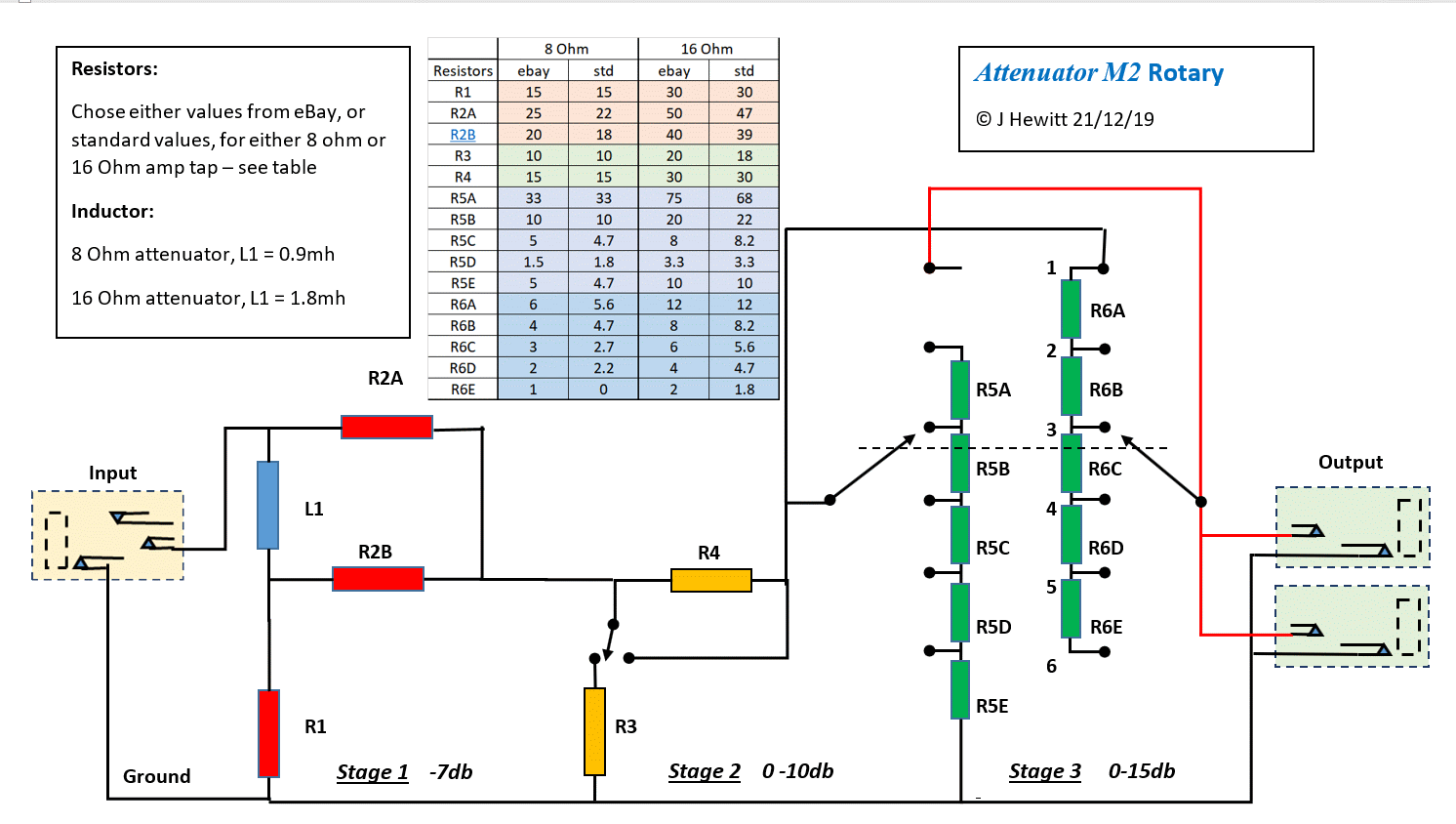JohnH
Well-Known Member
Hi John,
Thanks for all of your hard work and contributions on this and the various other projects you've come up with for us guitarists (I've built and installed your buffer in one of my guitars).
I built what I think is the M1 version of this attenuator a couple of years ago and it works well.
I've since acquired a Tone King Sky King which has two built in attenuators and I really like having them on board and I like the functionality of the rotary switch.
I'm working on building a single channel deluxe reverb in a princeton reverb chassis, and I would like to include this attenuator on a rotary switch as a sort of master volume.
I've reviewed the new M2 design as well as your previous design which incorporates a rotary switch, and come up with the following:

My goal is to have a six position rotary switch with the following db reductions: 0, 7, 14, 21, 28, 35
Am I on the right track here? Do the values look right?
Thanks again for all of your help and all of your contributions.
Sincerely,
hoost
Hi hoost, thanks for your interest and good to hear the M that you built before worked out well.
Doing these with a rotary as you describe is trickier than you might expect and i dont think that diagram will work rightly. To make these designs work its essential to keep control of both input and output impedances, for the safety of the amp and the consistency of the tone. It looks like the sketch is based around 8 Ohms, but I see that at minimum setting, the amp will see the 3.75 Ohm resistor, and output impedance varies widely.
The other issue is that if the switch is dealing with the full output as there, it needs to be rated for the full current from the amp which is several amps. Its very hard to find rotaries to do that.
Using the toggle switches allows a wide variation of settings, with plenty of switch rating, and each setting optimized for consistent results.








 to this fantastic forum! Yes, these attenuators are the holy grail of the whole genre!
to this fantastic forum! Yes, these attenuators are the holy grail of the whole genre!
